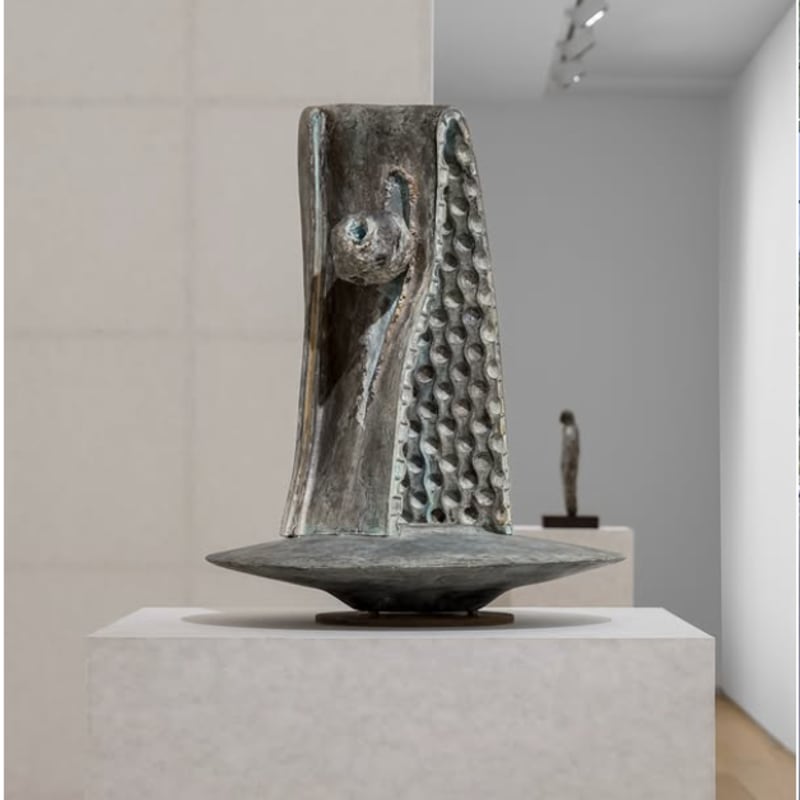

Overview
Rauschenberg believed that painting related to “both art and life. Neither can be made. I try to act in the gap between the two” - as famously stated in 1959.
Galerie Thaddaeus Ropac is pleased to present the first solo exhibition of American artist Robert Rauschenberg at their Marais gallery. The gallery has represented the artist’s estate since April 2015.
The exhibition will showcase paintings from the Salvage series (1983-1985), the artist’s last series on canvas. Consisting of canvases painted and silkscreened with photographs either collected in magazines or taken by himself, Salvage recalls the topics and compositions of his iconic Silkscreen Paintings from the early sixties. Although they use commercial printing processes and focus on mass-media imagery, they remain expressionistic, painterly, and multipart in organization.
Rauschenberg likes wordplay and the exact meaning of the title remains ambiguous. Historically borrowed from the lexicon of maritime terms, salvage designates the act of rescuing debris from a disaster like a shipwreck and, by extension, defines the act of collecting the rescued goods themselves. As such, the title teasingly recalls the artist’s longstanding use of found objects and images in his work. It also plays on the word selvage, which means a fabric edge intended to be cut off and discarded. In this specific case, it might refer to “salvaged” drop cloths that the artist used when silk-screening costumes for Set and Reset (1983), Trisha Brown’s choreographic piece he collaborated on, just before he started the series.
Rauschenberg believed that painting related to “both art and life. Neither can be made. I try to act in the gap between the two” - as famously stated in 1959. Following from this belief, he created artworks that move between these realms, in constant dialogue with the viewers and the surrounding world, as well as with art history. Merging silkscreened photographs with gestural abstraction was a way to incorporate elements from reality into the field of painting.
Considering the world as a gigantic painting, the process of cropping artfully from it and then clustering the actuality and materials of the real world in and onto his art remained his central project. Spanning a variety of themes, the Salvage series counts amongst his finest achievements. It presents recurrent motifs (bicycles, cars, farm animals and architectures) that reflect Rauschenberg’s renewed bond to photography in the early 1980s. His photographs signified a specific approach to the archaeology of the present times, which his paintings forcefully carry out to this day.
A fully illustrated catalogue will accompany the exhibition with essays by Hervé Vanel and Mark Ormond.
As Hervé Vanel explains in his essay: “What the Salvage series was attempting to rescue is not reducible merely to fragments of personal memory mingled with clever quotations. The series, to borrow something Rauschenberg said, keeps inviting ‘a constant change of focus and an examination of detail.’ It is essentially as if, whatever the cost, the vocabulary and the visual grammar should never be pinned down in a way that might make them easy to decode.”
Born in 1925 in Port Arthur, Texas, USA, Robert Rauschenberg has been a major influence in the art world. Stepping away from defined models of practice towards new modes that integrated the signs, images, and materials of the everyday world, his quest for innovation was fuelled by his boundless curiosity and enthusiasm for new ways of working. Over the span of six decades, he worked in a wide range of mediums including painting, sculpture, prints, photography, and performance, always questioning the ways the deluge of images in modern media culture could be transmitted and transformed. In 1964, he became the first American artist to win the Golden Lion at the Venice Biennial.
The exhibition of the Salvage series in Paris comes ahead of the first comprehensive retrospective of the artist to be organized since his death in 2008. Robert Rauschenberg will be on view at Tate Modern, London (30 November 2016–2 April 2017), the Museum of Modern Art, New York (21 May 2017–4 September 2017) and the San Francisco Museum of Modern Art (4 November 2017–25 March 2018).

















































































































































































